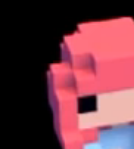taby said:
P.s. Mac doesn't support OpenGL 4.3. No compute shaders. fuck em
What? I'm shocked.
Well, there is still a Vulkan→Metal emulation library i could use. But porting API calls to Metal shouldn't be that bad, and making a shader transpiler probably neither.
It looks short sighted and ignorant how Apple ignores cross platform APIs, but actually, the reality is the opposite of that impression:
Apple has highly efficient M1 CPU which competes PCs requiring 4 times more power. They already put the whole computer into a single chip, and realize consumers need no data center hardware.
Meanwhile in PC land: PC gamers buying new 1200W PSU and a larger case to overclock their 2000EUR RTX4090s so they can play ray traced Portal and Quake, plus 3 sponsored AAA games at psycho settings.
That's nonsense, but the sycophantic alliance made from enthusiast gamers, devs and tech journalists is unable to adapt to Moores Law being dead. They prefer to sink with their unaffordable power hungry titanic, over lowering their expectations on ever growing HW power. They have no interest in a low power PC gaming platform and rather commit suicide than imagining such future.
The old prejudges about Apple being expensive are no longer upright either. A Apple laptop does not really cost much more than a similar specced Windows device anymore.
Plus, Apples ecosystem has much more to offer. You can pay in the supermarket with your iPhone, have a Smart Home, managed your contacts across all devices, all easy to use with foolproof Apple one button software.
Once you're in, you won't leave the Apple ecosystem, because it just works.
If Apple decides to enter gaming seriously, they could easily wipe out the PC platform from consumer space within a decade, i'm sure. It feels just a matter of time until they decide to do this.
Now i don't like this. Windows sucks, but PC is still an open platform, and that's what i want.
So i hope things like Steam Deck and other APU gaming handhelds are successful enough to change the media landscape. People have to realize affordable low power HW is better for games than path tracing bullshit.
We need cheap APUs to replace dGPUs for mainstream gaming, otherwise the platform is outdated and subject to funeral within the next years.






